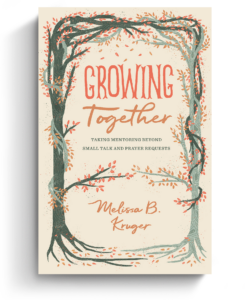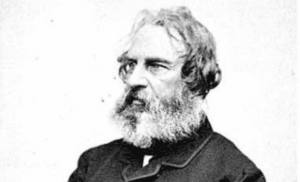Today most people know St. Patrick for green beer, banishing snakes from Ireland, using shamrocks to teach the Trinity, or his walking stick growing into a living tree. Indeed, none of these legends has anything to do with the real Patrick.
However, the factual accounts of Patrick, missionary to Ireland, are even more compelling than the folklore. Telling the true story of Patrick provides an inspiring lesson in God’s grace and mercy.
While other 1,500-year-old characters in history are difficult to research because too few writings have survived time, Patrick is hard to study because so much has been written about him. The bulk of the writings on Patrick are lore, fiction, and embellishment. In uncovering the real Patrick we must sift through ten fictional accounts of his life to find one factual work.
From Slave to Evangelist
As a teenager Patrick was kidnapped, taken from his home in southern Britain, and sold into slavery on the island of Ireland. During his six years as a slave he converted to Christianity and earned a reputation as a fervent evangelist. In the dark of the night Patrick escaped his bonds and fled Ireland. Following a long journey home he entered theological training and full-time service to the Lord. God spoke to Patrick in his dreams and told him that he would return to Ireland and serve as a missionary to the people who had kept him in servitude.
In AD 432, 25 years after fleeing Ireland, Patrick returned to the place of his bondage. He did not return with malice in his heart, but as a missionary eager to convert the Irish. Patrick served in regions of Ireland where outsiders had never traveled. While roaming through Ireland he preached to pagans and also instructed Christian believers. Patrick trained Irish helpers and ordained native clergy. He was bringing a new way of life to a violent, war-oriented pagan culture. His work was both groundbreaking and Christ-honoring.
“Daily I expect to be murdered or betrayed or reduced to slavery if the occasion arises,” Patrick wrote while serving in Ireland. “But I fear nothing, because of the promises of heaven.”
Many brutal kings and warlords felt threatened by Patrick’s work. In order to obtain the favor of local leaders and to gain safe passage, Patrick paid penance, or bribes, to authorities. He used the rulers to gain access to their lands just as they used Patrick to gain wealth and favor with Christians. Of the bribes he paid, Patrick proclaimed, “I do not regret this nor do I regard it as enough. I am paying out still and I shall pay out more.”
Missionary Ahead of His Time
In fifth-century Ireland women were a commodity. Selling a daughter or arranging a politically strategic marriage was common and advantageous to a family. Patrick upset the social order by teaching women they had a choice in Christ. As God converted these women to Christianity, some became full-time servants of Christ in the face of strong family opposition. Patrick told women they could be “virgins for Christ” by remaining chaste. This newfound control was appealing to many women, but it angered many men who believed Patrick was taking away their prized possessions.
At the time many scholars regarded Ireland as the end of the earth, or at least the edge of the inhabitable portion of earth. The collapsing Roman Empire supported many beliefs that civilized society was drawing to a close. Politicians and philosophers viewed Ireland as barbaric and untamable. Many Christians did not believe the Irish were worthy of being saved. At that point in history, Patrick truly served as a pioneering missionary to a forgotten people.
Patrick advocated learning among Christians. He promoted the ascetic life and monasticism. The Irish culture did not place great value on literacy or education. Patrick, however, promoted studying the Scriptures as well as reading books written by fathers of the faith.
Recovering the True Patrick
Patrick entered an Ireland full of paganism and idol worship. But just a few short decades after Patrick arrived, a healthy, Christ-honoring church was thriving. The Irish church was so strong that in the centuries to come it would send missionaries to evangelize much of continental Europe. Patrick’s legacy lives on through the countless spiritual grandchildren he left to continue his work.
Patrick lived in a way that brought honor to God. His devotion and resolute obedience offer examples for all followers of Christ. Patrick stood in the face of great challenges and did not falter. His service, his life, and his unwavering commitment to spreading the gospel of Christ are as commendable today as they were in the fifth century.
We as Christians have allowed the modern, secular customs of St. Patrick’s Day to steal away one of the greatest missionaries in Christian history and reduce his memory to leprechauns, green beer, and fictional tales. Let’s take back our beloved servant of Christ and share God’s glory achieved during the life of Patrick the missionary to Ireland. Let’s share the true legacy of this great Christian evangelist.
Involved in Women’s Ministry? Add This to Your Discipleship Tool Kit.
 We need one another. Yet we don’t always know how to develop deep relationships to help us grow in the Christian life. Younger believers benefit from the guidance and wisdom of more mature saints as their faith deepens. But too often, potential mentors lack clarity and training on how to engage in discipling those they can influence.
We need one another. Yet we don’t always know how to develop deep relationships to help us grow in the Christian life. Younger believers benefit from the guidance and wisdom of more mature saints as their faith deepens. But too often, potential mentors lack clarity and training on how to engage in discipling those they can influence.
Whether you’re longing to find a spiritual mentor or hoping to serve as a guide for someone else, we have a FREE resource to encourage and equip you. In Growing Together: Taking Mentoring Beyond Small Talk and Prayer Requests, Melissa Kruger, TGC’s vice president of discipleship programming, offers encouraging lessons to guide conversations that promote spiritual growth in both the mentee and mentor.

































